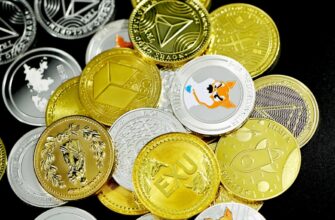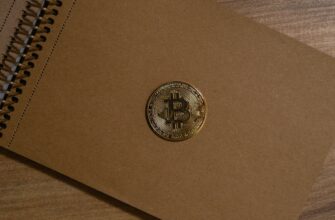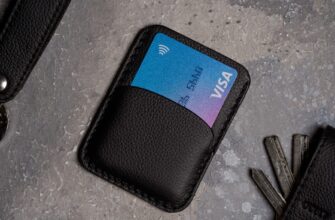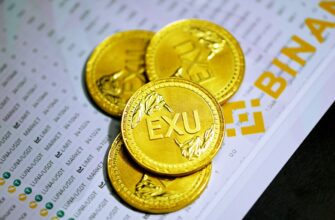- Introduction: Two Worlds of Digital Finance
- What is M-Pesa?
- What is Bitcoin?
- Key Differences: M-Pesa vs Bitcoin
- Can You Use Bitcoin with M-Pesa?
- Benefits of Combining M-Pesa and Bitcoin
- Challenges and Limitations
- Future Outlook: Convergence Ahead?
- Frequently Asked Questions (FAQ)
- Is M-Pesa a cryptocurrency?
- Can I buy Bitcoin directly with M-Pesa?
- Which is safer: M-Pesa or Bitcoin?
- Will Bitcoin replace M-Pesa in Africa?
- How do fees compare for $100 transfers?
Introduction: Two Worlds of Digital Finance
M-Pesa and Bitcoin represent revolutionary approaches to digital finance, yet they operate in fundamentally different ways. While M-Pesa dominates mobile money in Africa with its user-friendly fiat transactions, Bitcoin pioneered decentralized cryptocurrency globally. This article explores their synergies, differences, and how they might reshape financial inclusion together.
What is M-Pesa?
Launched in Kenya in 2007, M-Pesa (“Mobile Money” in Swahili) is a mobile phone-based payment system. Operated by Vodafone and Safaricom, it allows users to:
- Deposit/withdraw cash at agent locations
- Transfer money via SMS
- Pay bills and buy airtime
- Access microloans and savings products
With over 50 million active users across 7 African countries, M-Pesa leverages existing mobile networks to serve the unbanked, requiring only basic feature phones.
What is Bitcoin?
Bitcoin (BTC) is the first decentralized cryptocurrency, created in 2009. Unlike M-Pesa, it operates without central authority using blockchain technology. Key features include:
- Peer-to-peer transactions on a public ledger
- Limited supply capped at 21 million coins
- Mining-based verification system
- Global accessibility with internet connection
Bitcoin enables borderless value transfer but faces volatility, with prices fluctuating based on market demand.
Key Differences: M-Pesa vs Bitcoin
Understanding their core distinctions is crucial:
- Centralization: M-Pesa is centrally controlled by telecom companies; Bitcoin is decentralized.
- Currency Type: M-Pesa handles national fiat currencies; Bitcoin is a standalone digital asset.
- Transaction Speed: M-Pesa processes in seconds; Bitcoin can take 10+ minutes.
- Fees: M-Pesa charges tiered fees (e.g., $0.12 for $10 transfer); Bitcoin fees vary with network congestion.
- Accessibility: M-Pesa works on basic phones; Bitcoin requires smartphones/internet.
Can You Use Bitcoin with M-Pesa?
Direct integration doesn’t exist, but third-party bridges enable conversions:
- P2P Exchanges: Platforms like Paxful allow trading Bitcoin for M-Pesa credits.
- Crypto Gateways: Services such as BitPesa (now AZA Finance) facilitate BTC-to-M-Pesa transfers.
- Prepaid Cards: Load Bitcoin onto cards spendable via M-Pesa.
Note: Regulations vary by country—always verify local compliance.
Benefits of Combining M-Pesa and Bitcoin
Integration unlocks powerful opportunities:
- Cross-Border Remittances: Migrants can send Bitcoin instantly to Africa, converted to M-Pesa at lower fees than traditional services.
- Dollar-Cost Averaging: Users can regularly convert small M-Pesa amounts to Bitcoin as inflation hedge.
- Merchant Expansion: Businesses accepting M-Pesa can tap global markets via Bitcoin payments.
- Financial Inclusion: Unbanked populations gain exposure to digital assets through familiar interfaces.
Challenges and Limitations
Significant hurdles remain:
- Regulatory Uncertainty: Many African governments restrict crypto-to-fiat conversions.
- Bitcoin Volatility: Sudden price swings risk user funds during conversion delays.
- Technical Barriers: Limited smartphone penetration in rural areas hinders Bitcoin access.
- Scam Risks: Unregulated P2P platforms may expose users to fraud.
Future Outlook: Convergence Ahead?
Emerging trends suggest deeper integration:
- Safaricom’s planned Ethereum-based blockchain could enable crypto compatibility.
- Stablecoins pegged to local currencies may bridge volatility gaps.
- Africa’s crypto adoption surged 1,200% in 2021 (Chainalysis), pressuring regulators for clearer frameworks.
As web3 evolves, expect hybrid solutions blending M-Pesa’s accessibility with Bitcoin’s borderless nature.
Frequently Asked Questions (FAQ)
Is M-Pesa a cryptocurrency?
No. M-Pesa is a mobile payment system for national fiat currencies like Kenyan shillings. It doesn’t use blockchain or decentralized technology.
Can I buy Bitcoin directly with M-Pesa?
Not natively, but third-party exchanges like LocalBitcoins allow you to trade M-Pesa credits for Bitcoin through peer-to-peer transfers.
Which is safer: M-Pesa or Bitcoin?
M-Pesa offers regulated consumer protection but relies on central security. Bitcoin eliminates third-party risk but requires personal key management. Both have distinct security profiles.
Will Bitcoin replace M-Pesa in Africa?
Unlikely soon. M-Pesa’s simplicity and telecom integration suit local needs better. However, Bitcoin may complement it for international transactions and savings diversification.
How do fees compare for $100 transfers?
M-Pesa: ~$1.20 domestically; $3-5 cross-border. Bitcoin: $0.50-$5 network fee + exchange conversion costs. International transfers via Bitcoin are often cheaper.








